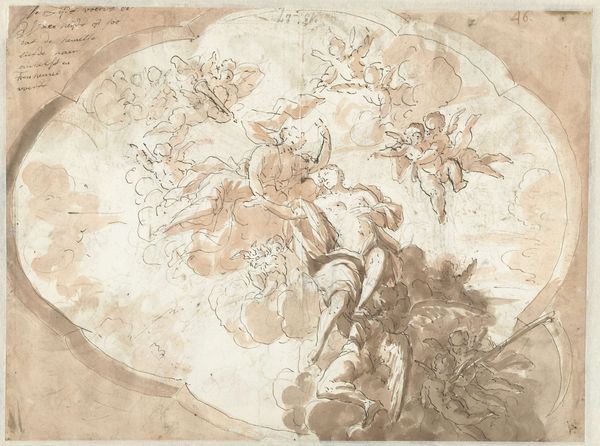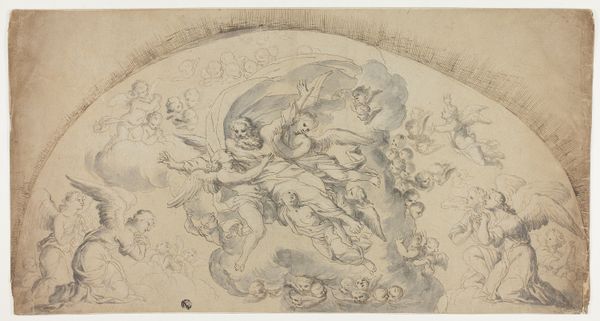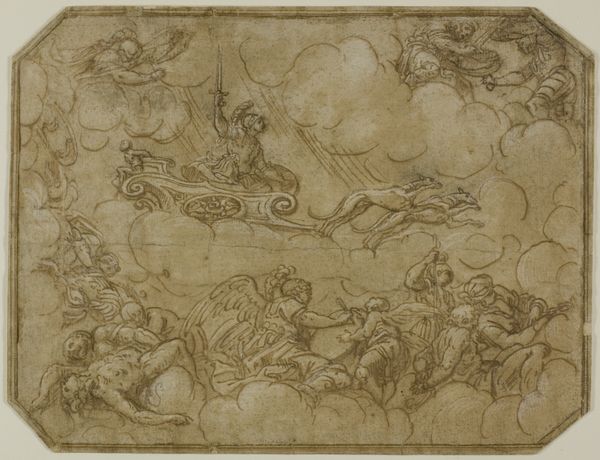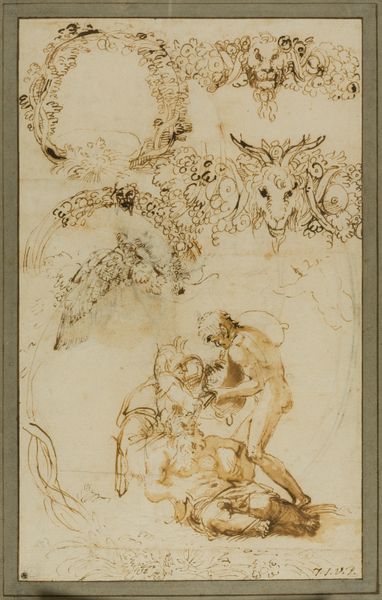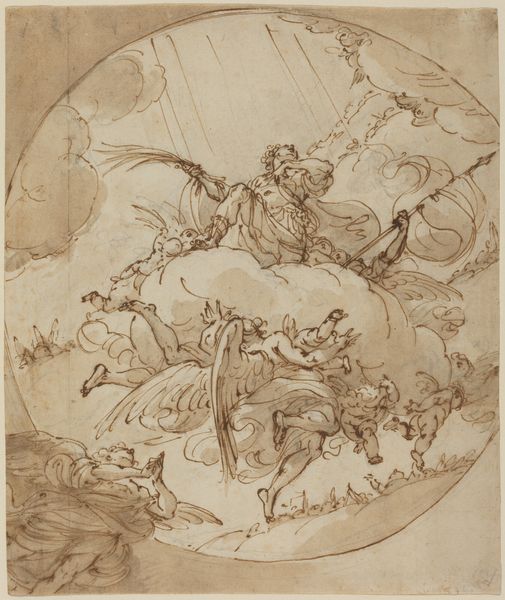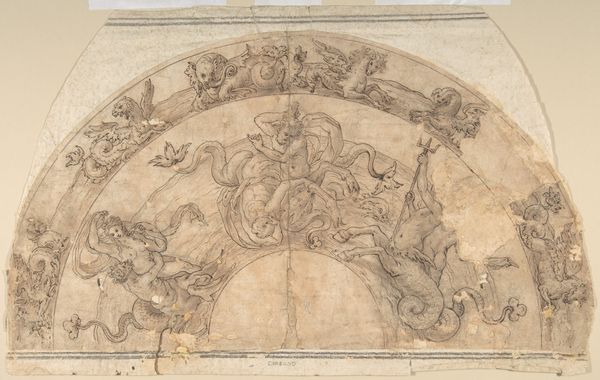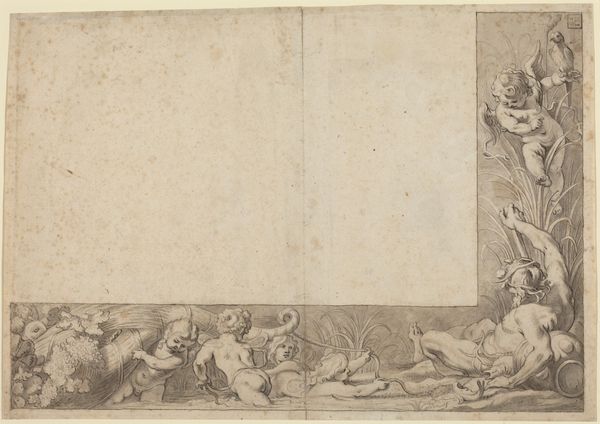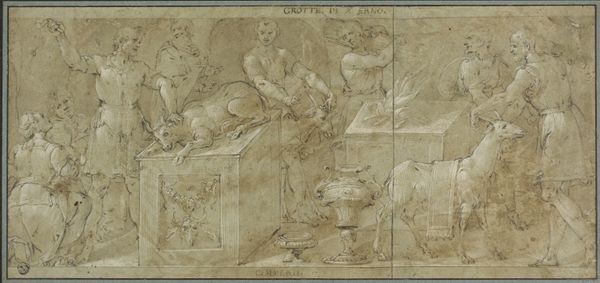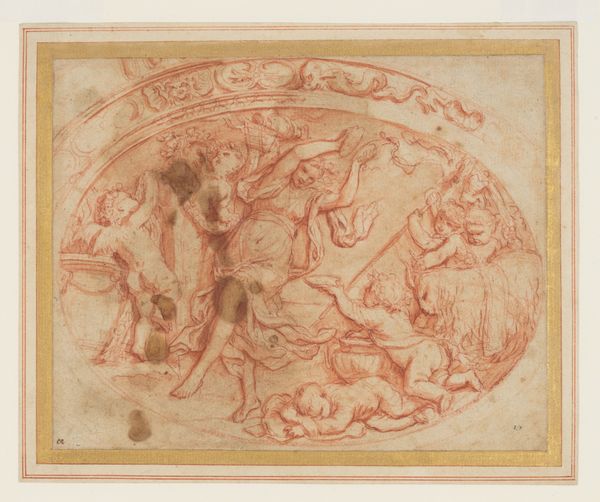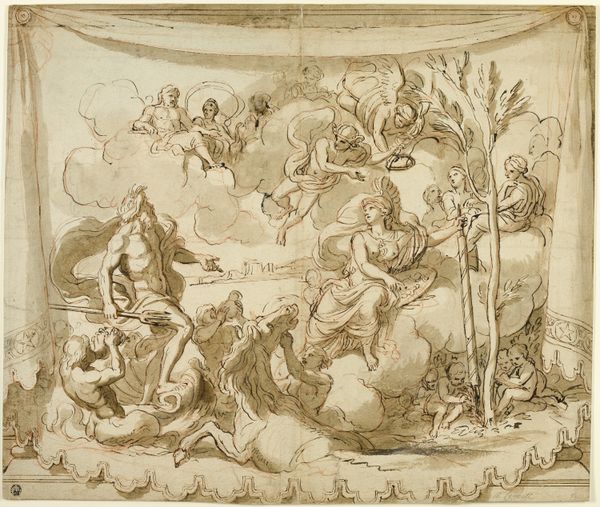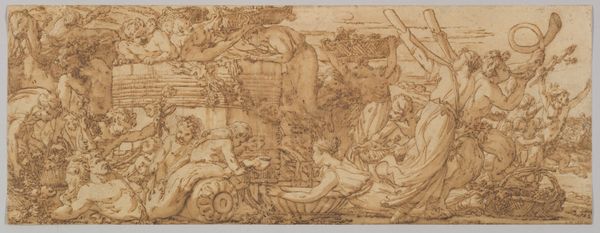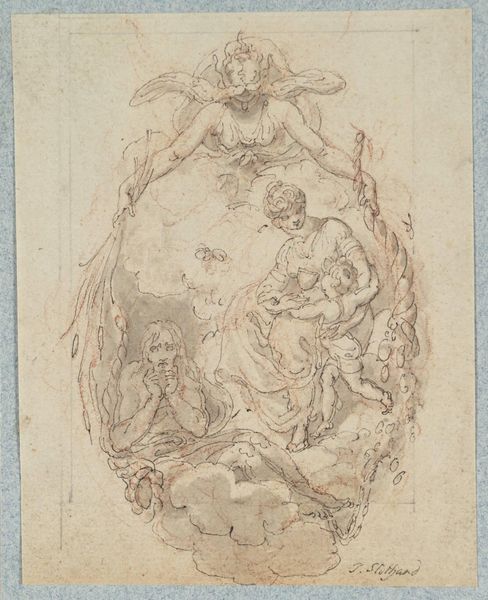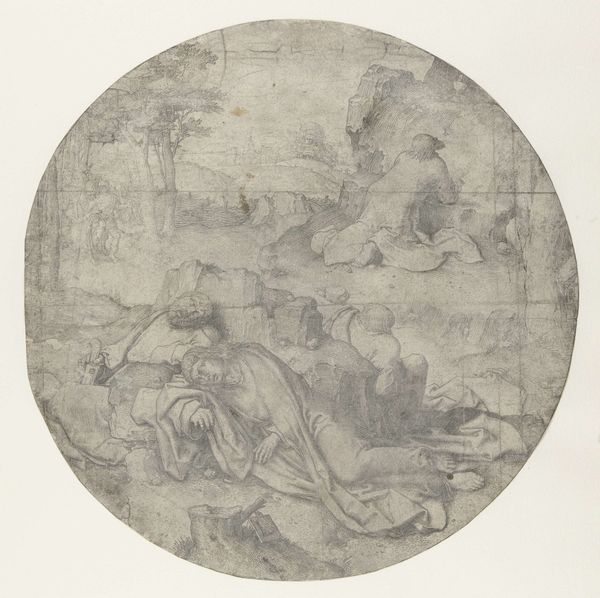
drawing, paper, ink, chalk, graphite, pen
#
portrait
#
drawing
#
allegory
#
figuration
#
paper
#
11_renaissance
#
ink
#
chalk
#
graphite
#
pen
#
academic-art
Dimensions: 178 × 297 mm
Copyright: Public Domain
Curator: Here we have a drawing titled "Celestial Scene with Angels," and while its maker remains unknown, it likely hails from the Renaissance period. We see pen, ink, graphite and chalk expertly laid on paper. Editor: My immediate response is a sense of ethereality, the way the figures seem to almost dissolve into the clouds. It's dreamy, but also a bit unsettling with the prominent central figure. Curator: Well, drawings like this often served as preparatory sketches. In Renaissance workshops, artists used drawings to explore composition and light before committing to a final painting or sculpture, often for wealthy patrons who then used these images to advance their influence. Editor: So, the art world then was also built on political clout and status. Tell me more about the figures here. Are we sure they're all angels? Some of the faces seem a bit... ambiguous. Curator: Traditionally, yes. The celestial realm, angelic beings—all stock imagery meant to convey divinity and divine order. Notice the dynamism and drama typical of Renaissance figuration, an attempt to appeal to patrons' emotions in ways they are able to perceive and accept. Editor: I wonder about the social implications of this celestial hierarchy. Who gets depicted as an angel, and who doesn't? In what ways are images like these co-opted and misused? There is almost a racial homogeneity amongst the beings displayed in the artwork; they reflect those in power. Curator: Absolutely. The idealized bodies, the visual rhetoric – all reinforce established power structures and canons of beauty during that historical moment. It really underscores how much art serves as a mirror reflecting not just skill but social and political attitudes. Editor: It’s powerful to consider art as not only aesthetic, but as embedded in systems of power and social messaging. Today, such pieces still prompt necessary conversations around representation, influence, and historical biases within the arts. Curator: Agreed. Reflecting on that interplay reminds us of our responsibility to see art in its full complexity, beyond mere aesthetic pleasure, considering its place within the machinery of culture itself.
Comments
No comments
Be the first to comment and join the conversation on the ultimate creative platform.
